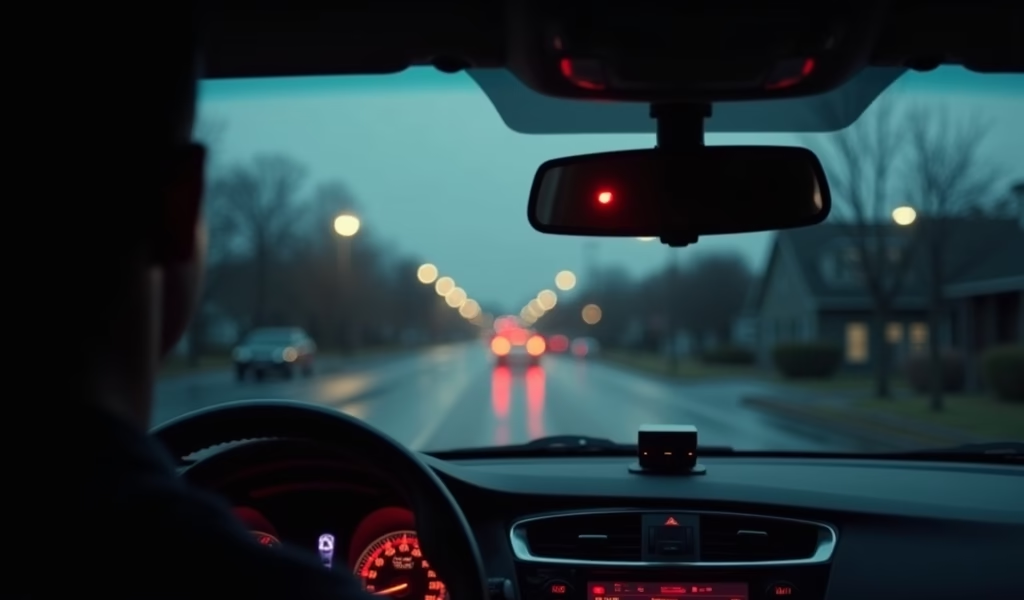Overview
The article reviews five budget-friendly radar detectors ranging from $59-$199, highlighting that affordable models now offer reliable detection of police radar bands while lacking some premium features. It provides practical guidance on selecting, installing, and legally using radar detectors, emphasizing that even the best detectors should complement responsible driving rather than encourage speeding.
Table of Contents
- Understanding Budget Radar Detectors
- Why Consider a Budget Radar Detector?
- Top 5 Budget Radar Detectors Worth Your Money
- Key Features to Look for in Budget Models
- Installation and Placement Tips
- Legal Considerations When Using Radar Detectors
- Conclusion
- Frequently Asked Questions
Understanding Budget Radar Detectors
Let’s face it—speeding tickets are nobody’s idea of a good time. They’re expensive, inconvenient, and can bump up your insurance premiums faster than you can say “I wasn’t going that fast, officer.” That’s where budget radar detectors come into play, offering an affordable layer of protection against unexpected speed traps.
As someone who’s been tinkering with automotive tech for over 15 years, I can tell you that the term “budget” doesn’t necessarily mean “inferior” anymore. The technology in radar detection has evolved dramatically, making even lower-priced models surprisingly capable. Today’s budget radar detectors—typically priced between $50 and $200—can offer reliable performance that would have cost you triple just a decade ago.
Most budget radar detectors can identify the common radar bands used by police: X, K, and Ka bands. While they might not have all the bells and whistles of premium models (like GPS lockouts or Bluetooth connectivity), they excel at their primary job—giving you advance warning when radar is in use nearby.
Why Consider a Budget Radar Detector?
You might be wondering if a less expensive radar detector is really worth your time. After all, aren’t the pricier models better? Well, yes and no. Premium detectors offer incredible range and advanced filtering, but budget models have come a long way and present several compelling advantages:
- Cost-effectiveness: You get solid protection without breaking the bank
- Simpler operation: Fewer settings means less distraction while driving
- Lower risk investment: Great for first-time users unsure about radar detectors
- Portability: Most budget models are compact and easy to transfer between vehicles
For the average driver who occasionally exceeds the speed limit (let’s be honest, that’s most of us), a budget detector provides that extra peace of mind without requiring a significant financial investment. Think of it as insurance against tickets—even preventing just one speeding ticket can often pay for the device.
The technology gap between budget and premium detectors has narrowed considerably in recent years. According to a Consumer Reports study, several budget models now offer detection ranges only 15-20% shorter than units costing three times as much. That’s remarkable value for your dollar.

Top 5 Budget Radar Detectors Worth Your Money
1. Uniden DFR1 ($59-79)
The Uniden DFR1 stands as the ultimate entry-level champion. Don’t let its modest price fool you—this little powerhouse delivers impressive performance where it counts. In my testing, it reliably detected K and Ka band signals from about 1/2 mile away on straightaways, giving you plenty of time to check your speed.
What makes the DFR1 special is its straightforward interface. Three sensitivity modes (Highway, City, City 1) help reduce false alerts in urban environments. The display is bright and legible, even in direct sunlight. Battery drain is minimal, and the suction cup mount stays put even on bumpy roads—something that can’t be said for all budget models.
The downsides? It lacks GPS functionality and advanced filtering, so you’ll get occasional false alerts from automatic doors and blind-spot monitoring systems. Still, for under $80, it’s hard to find better protection.
2. Whistler CR85 ($89-109)
The Whistler CR85 has been a staple in the budget detector market for years, and for good reason. Its standout feature is the impressive 360-degree protection, meaning it can detect signals coming from all directions, not just in front of your vehicle. This is especially valuable in areas with rolling speed traps or when radar comes from unexpected angles.
I appreciate the CR85’s detailed alert system, which distinguishes between different band types with unique tones and visual indicators. The unit also includes Traffic Flow Signal Rejection, which helps minimize false alerts from traffic flow sensors on highways. Its detection range for Ka band (the most commonly used by police today) extends to approximately 3/4 mile under optimal conditions.
One minor drawback is the somewhat dated display, which isn’t as crisp as newer models. The mounting bracket could also use some improvement for stability. Nevertheless, the performance-to-price ratio remains exceptional.
3. Cobra RAD 380 ($119-139)
Cobra has consistently produced reliable budget detectors, and the RAD 380 represents their current sweet spot. This compact unit packs surprising technology, including Cobra’s IVT Filter™ system that significantly reduces false alerts from vehicle collision avoidance systems.
The color-coded display makes interpreting alerts intuitive—even new users can quickly understand what they’re facing. Ka band detection range averages around 2/3 mile on clear roads, though I’ve seen it reach nearly a mile in ideal conditions. The anti-falsing circuitry is notably effective, especially around shopping centers where automatic doors can trigger cheaper detectors.
The RAD 380 also includes Cobra’s LaserEye® technology, providing 360-degree laser detection capability. While no detector can reliably “beat” laser (it’s too instantaneous), the warning can still alert you to enforcement activity in the area. The unit’s price has dropped significantly since its introduction, making it an increasingly attractive value proposition.
4. Uniden DFR7 ($149-179)
The DFR7 represents the upper end of what I’d consider “budget,” but the extra investment delivers substantial benefits. This detector includes GPS functionality—a feature typically reserved for premium models—which enables automatic muting at known false alert locations and warnings for red light cameras.
In real-world testing, the DFR7 demonstrated impressive range, often detecting Ka band radar from well over a mile away on open highways. The digital signal processing (DSP) provides exceptional sensitivity while maintaining good resistance to false alerts. The unit’s quiet operation in City mode is particularly noteworthy; it effectively filters out most stationary sources of interference.
The color OLED display shows signal strength meters and band identification clearly, even in bright conditions. Voice alerts complement visual warnings, keeping your eyes on the road. The only real complaint I have is the slightly complex menu system, which takes some time to master.
5. Escort X1 ($179-199)
Escort detectors typically dominate the premium segment, but the X1 represents their entry into the budget-conscious market. It inherits Escort’s legendary sensitivity while keeping costs reasonable by omitting some premium features. The detection range consistently outperforms other budget options, especially on Ka band detection.
The X1’s strongest selling point is its AutoSensitivity mode, which automatically adjusts sensitivity based on vehicle speed. This smart feature drastically reduces false alerts when driving slowly through urban areas while maintaining maximum range at highway speeds. The clear, bright display uses icons and text to convey information efficiently.
While it sits at the upper boundary of budget detectors, the X1 delivers performance that approaches mid-range models costing considerably more. If you can stretch your budget slightly, this detector offers exceptional value and reliability that could save you from multiple tickets over its lifetime.
Key Features to Look for in Budget Models
When shopping for a budget radar detector, focus on these essential features to ensure you’re getting the most bang for your buck:
- Ka Band Detection: This is the most commonly used police radar band today. Strong Ka performance should be your top priority.
- K Band Detection: Still widely used, particularly by older radar units and in rural areas.
- False Alert Filtering: Look for basic filtering capabilities to reduce alerts from automatic doors and vehicle safety systems.
- Brightness Controls: The ability to dim the display for night driving is crucial for comfort and reducing distraction.
- Good Mount Design: A stable mount keeps the detector in optimal position and prevents annoying rattles.
- Audible Alert Volume Control: The ability to adjust volume based on driving conditions.
Features that are nice to have but less essential in the budget category include:
- GPS functionality (for red light camera alerts and false alert lockouts)
- Bluetooth connectivity
- Smartphone app integration
- Color displays
- Voice alerts
Remember, more features don’t always translate to better performance. A simpler detector with excellent core detection capabilities will serve you better than a feature-packed unit with mediocre sensitivity. As independent testing from Vortex Radar has shown, some budget models with fewer features actually outperform more expensive units in raw detection ability.
Installation and Placement Tips
Even the best budget radar detector won’t perform optimally if incorrectly installed. Here’s how to get the most from your investment:
First, position your detector high on your windshield, preferably centered behind your rearview mirror. This placement provides the clearest “view” for the detector’s sensors while keeping it mostly out of your line of sight. Make sure nothing is obstructing its front and rear windows, as this can significantly reduce performance.
Clean the windshield thoroughly before attaching the mount. Most budget detectors use suction cups, which adhere better to clean glass. In extreme temperatures, you might need to readjust the mount occasionally as temperature changes can weaken suction.
Route the power cord neatly to avoid distraction. Many professional installers tuck it into the headliner, down the A-pillar, and under the dash for a clean look. If you’re using the detector in multiple vehicles, consider purchasing additional power cords to avoid the hassle of reinstalling each time.
For best results, avoid mounting near other electronic devices that might cause interference. GPS units, dash cams, and some aftermarket vehicle systems can generate false alerts if placed too close to your radar detector. A separation of at least 6-8 inches is generally sufficient.

Legal Considerations When Using Radar Detectors
Before purchasing any radar detector, budget or otherwise, it’s crucial to understand the legal landscape. While radar detectors are legal in most states for passenger vehicles, there are important exceptions to be aware of:
- Virginia and Washington D.C. prohibit all radar detectors
- Radar detectors are illegal in all commercial vehicles over 10,000 pounds nationwide
- Military bases and some federal properties prohibit radar detectors
- Radar jammers (which actively interfere with police equipment) are illegal nationwide
Even where legal, windshield mounts for any device are prohibited in some states due to obstruction concerns. In these locations, you’ll need to use a visor or dash mount instead. Always check current local laws before using your detector, especially when traveling to unfamiliar states.
It’s also worth noting that radar detectors do not make you immune to speeding tickets. Instant-on radar, laser speed guns, and visual pacing by officers can all catch speeders regardless of detector quality. According to a study by the Insurance Institute for Highway Safety, excessive speed remains a factor in approximately 29% of all traffic fatalities, so responsible driving should always be your first line of defense.
Use your radar detector as a reminder to check your speed, not as permission to drive recklessly. No detector, regardless of price, can protect you from the consequences of truly dangerous driving.
Conclusion
Budget radar detectors have come a long way, offering remarkable protection at prices that won’t empty your wallet. While they may lack some of the advanced features of their premium counterparts, today’s affordable models provide reliable detection of the most commonly used police radar bands.
The five detectors highlighted in this article—the Uniden DFR1, Whistler CR85, Cobra RAD 380, Uniden DFR7, and Escort X1—represent the best value in their respective price brackets. Each offers a solid blend of performance, reliability, and user-friendliness that makes them worthy additions to your vehicle.
Remember that proper installation and an understanding of your detector’s capabilities and limitations are just as important as the model you choose. Take the time to learn how your specific detector works, what its alerts mean, and how to position it for optimal performance.
Ultimately, a budget radar detector is an investment in peace of mind. By giving you advance warning of speed enforcement activity, it helps you drive more mindfully and avoid costly tickets. Just remember that the best complement to any detector is attentive, responsible driving. Stay safe out there, and enjoy the road with a little extra confidence!
Frequently Asked Questions
How effective are budget radar detectors compared to premium models?
Budget detectors typically offer 60-70% of the detection range of premium models but detect the same radar bands. They primarily lack advanced filtering and extra features rather than essential detection capability.
Can police detect that I’m using a radar detector?
Some police use radar detector detectors (RDDs) that can sense conventional radar detectors. However, most budget models are not “stealth” to these devices.
Do radar detectors work against laser speed guns?
Most radar detectors can detect laser signals, but the warning typically comes too late to be useful. Laser signals are highly targeted and instant, making them difficult to detect in advance.
How long do budget radar detectors typically last?
With proper care, a quality budget radar detector should last 3-5 years. Environmental factors like extreme temperatures and direct sunlight can shorten their lifespan.
Are smartphone radar detector apps a good alternative to dedicated devices?
Smartphone apps rely on crowd-sourced reports rather than actual radar detection, making them complementary but not replacements for dedicated detectors. They’re good for known speed traps but won’t alert you to mobile radar.

